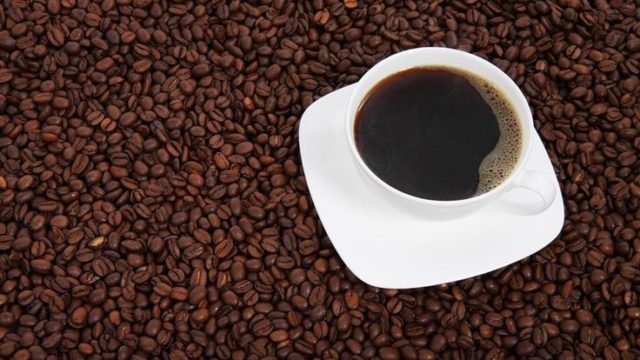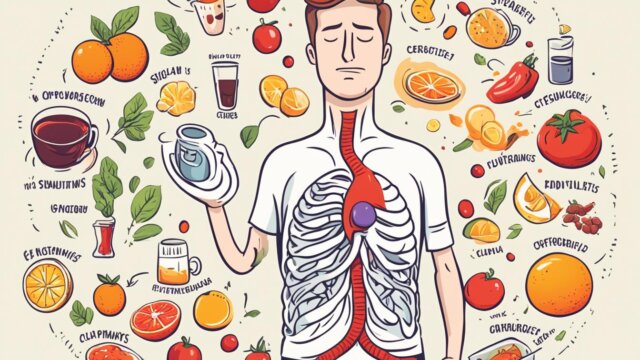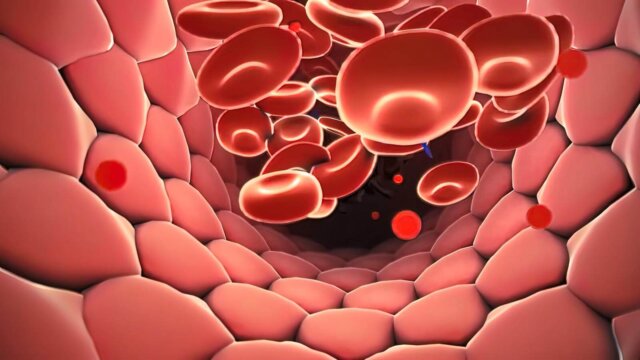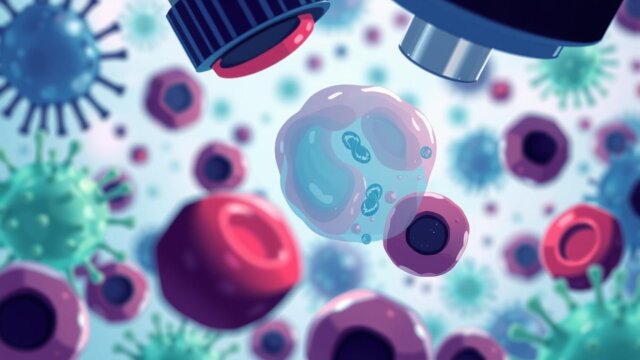FTC disclaimer: This post may contains affiliate links and we will be compensated if you click on a link and make a purchase.
When you look at the ingredients list of most processed foods, you will find added food additives and food preservatives.
Food additives and food preservatives in foods contain harmful and toxic chemicals that can create havoc in your body.
These food additives and food preservatives are generally used to enhance the flavor of foods. It also improves the appearance or texture of foods and extends the shelf life of foods.
These harmful chemicals in processed foods have been associated with health hazards and should be avoided at any cost.
Also, some dangerous chemical ingredients in food can lead to different types of cancer. Further, it will contribute to obesity, disrupt your hormones, and cardiovascular diseases.
What are food additives?

Food additives are substances that are added to enhance taste, appearance, and texture. It improves qualities, preserves the flavor, and improves the safety of foods.
The most common type of food additives is High Fructose Corn Syrup (HFCS), Monosodium Glutamate (MSG), Sodium Nitrite, Sodium Benzoate, artificial food coloring, and much more.
The most common food additives are antioxidants, colors, sweeteners, flavor enhancers, preservatives, emulsifiers, and stabilizers.
The food additives can be natural, nature-identical, or artificial.
- Natural additives are naturally extracted from foodstuffs like fruits and vegetables. For example, beetroot bright purple color can be extracted to give color to processed foods like sweets.
- Nature identical additives are human-made additives that are identical to natural additives. For example, benzoic acid is naturally available, but it can also be synthetically made and used as a preservative.
- Artificial additives are synthetically made and are not present in nature. For example, Azodicarbonamide, a chemical compound synthetically made as a food additive, is used as a flour bleaching agent and an improving agent.
You should know that food additives and unhealthiness are interrelated to each other. On average, 60% of the average American diet contains chemically added processed foods.
The worst ingredient in foods that are sold in the U.S is banned in other countries.
Mainly, 80% of all packed foods that are sold in American grocery stores contained harmful ingredients. And some of them are illegal in other countries.
Let’s look into the list of food additives and their side effects.
List of food additives and preservatives to avoid
High Fructose Corn Syrup
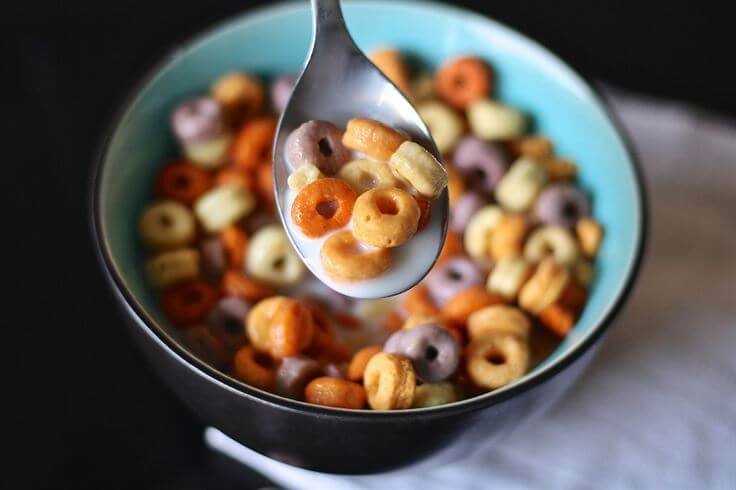
High Fructose Corn Syrup is a highly refined sweetener made from corn starch. You will frequently find many foods, such as breakfast cereals, snack foods, candy, and soda.
However, High Fructose Corn Syrup is mainly rich in Fructose, a type of simple sugar.
Also, when compared with traditional sweeteners, high fructose corn syrup is cheaper and sweeter. And it also mixes well with other ingredients in food.
It has been estimated that the average American consumes nearly 63 pounds of High Fructose Corn Syrup in a year.
The other purpose of High Fructose Corn Syrup is to give good texture and color to the food. Like we see the inviting brown color in bread, hamburger buns, and English muffins.
Furthermore, High Fructose Corn Syrup contributes only empty calories without any vitamins and minerals.
What research says about High Fructose Corn Syrup?
A recent study found that High Fructose Corn Syrup will destroy your delicate metabolic processes and elevate disorders like high cholesterol, insulin sensitivity, and triglycerides.
Further, in another study, it was revealed that high Fructose Corn Syrup consumption would increase visceral fat and decrease insulin sensitivity, which in turn gives rise to overweight and obesity.
Several studies also estimate that High Fructose Corn Syrup’s consumption can lead to epidemic diseases like obesity, hypertension, kidney disease, cardiovascular disease, diabetes, and metabolic syndrome.
Additionally, according to other studies, High Fructose Corn Syrup triggers inflammation in the cell. This inflammation plays a vital role in chronic conditions like cancer, heart disease, and diabetes.
What are the other names of High Fructose Corn Syrup (HFCS)?
High Fructose Corn Syrup’s other name is glucose syrup, corn sugar, fruit fructose, and iso-glucose.
In which food you will find High Fructose Corn Syrup?
The food that contains High Fructose Corn Syrup as food additives are:
Soda, bread, yogurt, salad dressing, soup, pizza sauce, condiments, canned vegetables, and lunch meats.
Artificial Food Coloring and Food Dyes
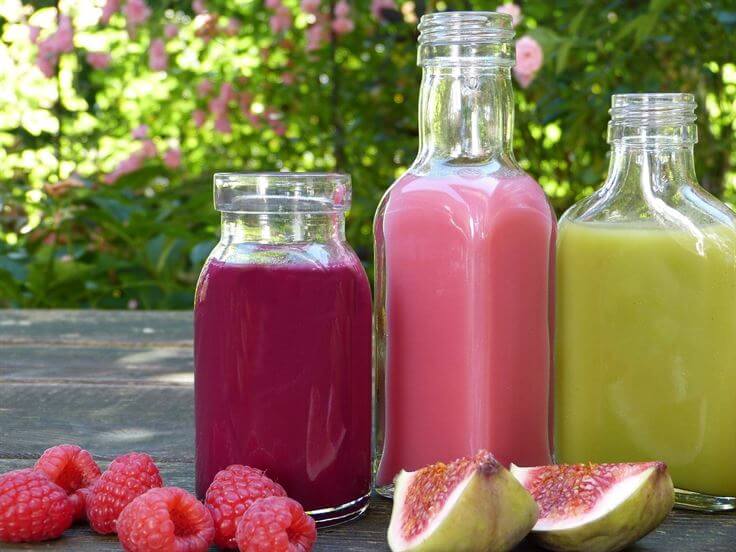
Artificial Food Coloring and Food Dyes are used to give a good appearance to food. It also brightens the food to look attractive and appealing.
You will find Artificial Food Coloring in all sorts of foods, especially in those marketed for children.
The use of Artificial Food Coloring and Food Dyes are banned in Europe.
Additionally, it has been confirmed to link with various types of cancers. It has shown behavioral problems in kids such as hyperactivity disorder, or ADHD, and chromosomal damage.
What research says about Artificial Food Coloring and Food Dyes?
Various studies have reported that Artificial food color may promote hyperactivity in children.
While another study showed that it aggravates ADHD in children, children also become more sensitive to others.
However, some food dyes like Yellow 5, Yellow 6, Red 40, and Blue 1 increase allergic reactions.
While in some animal studies, it has shown that Red 3, also known as erythrosine, has increased thyroid tumors’ risk.
What are other names of Artificial food coloring?
The other names of Artificial food coloring are:
Green 3, Red 3, Red 40, and Yellow 6 – E110, Blue 1 and 2 – E133, yellow tartrazine – E102.
In which food you will find artificial food coloring?
The food mainly contains artificial food coloring as food additives are:
Salad dressing, ice cream, cocktail mixes, fruit juices, American cheese, mac and cheese, bakery products, lemonade, pie mixes, pudding, fast food, cereal, energy bars, jams, kid’s medication, meat, and fish (to look fresh and appealing) and much more.
MSG – Monosodium Glutamate

Monosodium Glutamate is the most common food additive which works to enhance the flavor of food. Thus, it will make food addictive and keep you eating those foods again and again.
It is derived from glutamic acid or amino acid glutamate. Chemically, it resembles somewhere close to sugar or salt in a white crystal form if you look at MSG.
Regular consumption of Monosodium Glutamate will stimulate the appetite. Further, it contributes to weight gain and obesity. It is also shown to cause fatigue and headaches.
What research says about Monosodium Glutamate?
A research study conducted on the animal has found that MSG consumption has disturbed or disrupted endocrine functionality.
Moreover, another study has confirmed that the intake of MSG has an adverse effect on health, such as headaches and other sensitivity issues.
A study conducted in China has shown that increasing MSG intake has been linked to weight gain.
Similarly, two separate studies conducted on Vietnamese adults and in Thailand have a significant impact on weight gain and metabolic syndrome.
The higher dose of MSG in another study has been shown to give Asthma attacks in Asthma patients.
What are the other names of Monosodium Glutamate (MSG)?
The other Monosodium Glutamate (MSG) names are Hydrolyzed Plant Protein, Soy Protein Isolate, Vegetable Protein Extract, Yeast Extract, Hydrolyzed Vegetable Protein, Glutamate, Sodium Caseinate, Soy Protein, Glutamic Acid, Textured Protein, Barley Malt, Malt Extract, and Calcium Caseinate.
In which foods you will find Monosodium Glutamate (MSG)?
You will find MSG in many foods like canned meat, salad dressing, canned soups, frozen dinners, Chinese food, cookies, lunch meats, seasoning, and low-fat flavored yogurt.
Artificial Sweeteners

Artificial Sweeteners are used to enhance the sweetness in foods and beverages while reducing the calorie content.
At first glance, it may seem perfectly fine and a good sugar substitute. But, these Artificial Sweeteners are way sweeter than sugar and loaded with chemicals.
It has been estimated that artificial sweeteners are 700 times sweeter than normal sugar.
The regular intake of artificial sweeteners has been linked to many health-related issues. It will lead to type-2 diabetes, weight gain, high blood pressure, high blood sugar, and many more.
It will also disrupt your gut health, lead to cancer, damage tooth enamel, increase headaches and depression.
What research says about artificial sweeteners?
Some research has gathered evidence that the consumption of artificial sweeteners may increase your appetite and weight gain. It has established a direct correlation between obesity and artificial sweeteners.
Some studies have also shown that artificial sweeteners’ intake from foods will trick and confuse your brain. It will always make you feel hungry and not satisfied.
Additionally, it has also been suggested by some studies that artificial sweeteners may cause a craving for sugary foods.
However, some studies have reported that choosing artificial sweeteners in your diet will raise your blood sugar levels.
Also, drinking beverages like diet soda is associated with a greater risk of getting diabetes.
While some studies have confirmed the side effects of artificial sweeteners, their intake increases by getting metabolic syndrome risk by 36%.
Metabolic syndrome leads to high blood sugar, abnormal cholesterol levels, excess belly fat, high blood pressure, etc.
There are so many research and studies that show artificial sweeteners to be dangerous for your body.
What are the other names of Artificial Sweeteners?
The other names of Artificial Sweeteners are Saccharin, Aspartame, Equal, Sweet N Low, NutraSweet, Splenda, Sucralose, Acesulfame potassium.
In which Foods you will find Artificial Sweeteners?
Artificial Sweeteners have been added to over more than 6,000 products. Some of these products include diet-free soda and drinks, yogurt, instant breakfast, low-calorie beverages, dessert, gum, toothpaste, mints.
Hydrogenated Vegetable Oil or Trans fat

Hydrogenated vegetable oil’s primary work is to act as food preservatives. It increases the shelf life of the foods and also improves the consistency of any packed products.
You will find hydrogenated vegetable oil in any processed food. It is most commonly found in biscuits, baked goods, margarine, and microwave popcorn.
What research says about hydrogenated vegetable oil or trans fat?
According to research, the intake of hydrogenated vegetable oil or trans fat has the potential risk of getting all heart disease types.
In particular, many studies have revealed that increased intake of trans fat will increase several markers of inflammation in your body.
Further, it will decrease your immune system, increase LDL (bad) cholesterol, and lower HDL (good) cholesterol.
The studies conducted on women have shown that hydrogenated vegetable oil intake will have a 40% higher risk of getting type 2 diabetes.
Moreover, it will also contribute to many other health-related problems like obesity, strokes, heart diseases. Also, higher consumption of trans fat leads to an increased risk of metabolic syndrome.
What are other names of hydrogenated vegetable oil?
The other term for hydrogenated vegetable oil is partially hydrogenated oil (soy, palm, corn, etc.) and shortening.
In which food you will find hydrogenated vegetable oil?
Hydrogenated vegetable oil is mainly found in most foods like:
Any deep-fried foods, crackers, chips, margarine, baked foods, and fast food.
Sodium Nitrite and Sodium Nitrate

Both Sodium Nitrite and Sodium Nitrate are used to preserve meat for a longer time. These chemicals prevent bacteria’s growth, add salty flavor to the food, and give reddish-pink color.
You will find sodium nitrite and sodium nitrate in foods like hot dogs, sausage, bacon, lunchmeat, etc.
These food additives make processed meat tasty and flavorful.
But, when this chemical mixes with your stomach acid, then they form cancer causing-cell. This cancer-causing cell is associated with stomach, brain, oral, and bladder cancers.
Also, exposure to heat in the presence of amino acid, Nitrites get converted into Nitrosamine. It is a chemical compound that was found to have an adverse effect on health.
The formation of Nitrosamine is usually happened at high temperatures and has been linked to various types of cancer.
What research says about sodium nitrite and sodium nitrate?
In 2007 and 2011 reports, the World Cancer Research Fund International has revealed that eating red or processed meat increase the risk of getting bowel cancer.
Further, it clarifies that these processed foods have significantly less nutrient value. It can be very high in sodium and unhealthy fat.
The unprocessed red meat contributes to your health. It is a good source of protein, Vitamin B12, iron, and zinc.
One review has already indicated that the intake of Nitrite and Nitrosamine can lead to stomach cancer.
The other studies have already found an association of processed meat with Colorectal cancer, Breast cancer, and Bladder cancer.
However, another review has suggested that exposure to Nitrate, Nitrite, and Nitrosamines is linked with a greater risk of type 1 diabetes.
In which foods you will find sodium nitrite and sodium nitrate?
These harmful chemical ingredients you will find in:
Hot dogs, corned beef, ham, bacon, salami, canned meat, dried fish, smoked chicken, pickled pig’s feet, lunch meat, cured meat, and other processed meat.
BHA & BHT

Both BHA and BHT are known as Butylated hydroxyanisole and Butylated hydroxytoluene.
These chemical ingredients act as a food preservative to extend shelf life and keep foods from becoming rancid.
Both these toxic food preservatives are considered potentially carcinogenic, which means they will lead to cancer.
It is considered one of the major endocrine disruptors and can seriously mess with your hormones.
This food additive is also associated with liver and kidney damage, growth retardation, and hair loss.
Both BHA and BHT are ubiquitous in household foods. You will find in cereals, potato chips, vegetable oil, chewing gum, and many more.
You can also find BHA and BHT in many packaging foods and cosmetics.
What research says about BHA and BHT?
In a recent study, it has been established that BHA is responsible for a different type of endocrine disruption in humans.
Another study revealed that the BHA is considered sensitive to the eye and skin.
However, a recent report has indicated that BHA and BHT can be detrimental to the circulatory system.
In which foods you will find BHA and BHT?
You will find BHA and BHT as food additives in so many foods such as:
Hot dogs, cereals, packaging materials, sausage, chips, butter, beer, gum, vegetable oils, candy, jello, shortening, cosmetics.
Potassium Bromate

Potassium bromate is a food additive that is used mainly in flour. It works is to strengthen the dough and raise it higher.
Also, it gives the finished product like bread an appealing white color.
But, potassium bromate is linked to cancer.
Moreover, it is also banned in many countries, including the United Kingdom, Brazil, Canada, and the European Union.
It was also banned in China when an American brand packed with chips was found containing Potassium bromate.
However, it was also found to disrupt the genetic material like DNA and RNA within cells.
What research says about Potassium Bromate?
A recent study has shown that prolonged exposure to Potassium Bromate can lead to long-term toxic and carcinogenic effects.
While in 1999, the International Agency on Research for Cancer has declared Potassium Bromate a carcinogen.
What are the other names of Potassium Bromate?
The other name of Potassium Bromate is potassium salt, bromic acid, bromated flour, enriched flour.
In which food you will find Potassium Bromate?
It is found in many types of flour. And all kinds of commercial bread like Wonder Bread, Home Pride, bakery, and many more. So, it is necessary to check the ingredient in foods before you buy.
Sodium Benzoate and Potassium Benzoate

Both sodium benzoate and potassium benzoate are added to carbonated drinks to prevent mold from growing.
These harmful chemical ingredients are also added to acidic foods like salad dressing, fruit juices, pickles, and condiments.
But, both these chemical ingredient are carcinogen and has been linked to severe thyroid damage.
It becomes more dangerous when benzene is exposed to heat or combined with ascorbic acid (Vitamin C).
Although it has been recognized as a safe ingredient by the FDA, several studies have uncovered the potential risk and side effects of these chemicals.
Moreover, carbonated beverages indeed contain a high level of benzene, but the study revealed that diet or sugar-free beverages are even more dangerous and more prone to benzene formation.
What research says about sodium benzoate and potassium benzoate?
In a single research, it has been determined that mixing food coloring and benzoate can develop hyperactive behavior in 3-year-old children.
Further, the study conducted on college students has shown that the intake of sodium benzoate-rich beverages has been linked to symptoms of ADHD.
Moreover, another study has declared benzene formation when benzoate is combined with ascorbic acid (vitamin C).
Again, benzene is carcinogenic, which has been linked to benzene-induced cancer.
Where will you find sodium benzoate and potassium benzoate?
For most carbonated beverages, diet, or sugar-free beverages, you will find benzoate. It is always good to look for labels, especially if they contain citric acid or ascorbic acid.
Artificial Flavors
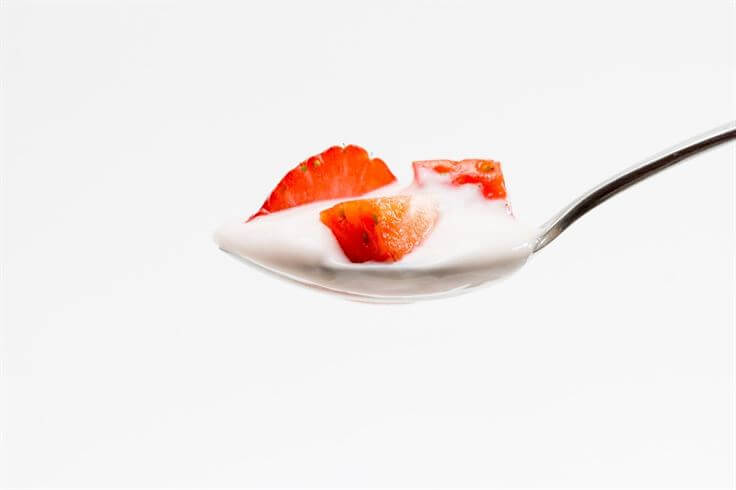
Artificial flavors are made by combining chemical ingredients. It is then synthesized in the lab that mimics a natural flavor in some way. It is also made to smell and taste exactly like the natural flavor of fruits and vegetables.
In general, natural flavor component molecules are more complicated compared to artificial ones.
Though artificial flavors won’t replicate or equivalent to natural flavors are often the markers of low-quality foods.
You would be wondering why artificial flavors are used. It is because artificial flavors are easy and cheap to break down into chemical parts.
However, the manufacturer doesn’t disclose the ingredients list in artificial flavor.
In which food you will find Artificial Flavors?
You will find artificial flavors in most processed foods such as candy, fast food, soda, and much more.
rBGH and rBST

rBGH is known as Recombinant Bovine Growth. And rBST is known as Hormone and Recombinant Bovine Somatotropin.
The work of these types of growth hormones is to boost milk production in cows. The cows, who have given these hormones, can develop high insulin-like growth factors (IGH-1).
The high insulin-like growth factor (IGH-1) is linked with colon, breast, and prostate cancers.
Additionally, rBGH, when injected in cows, gives rise to another health problem like mastitis – inflammation in the mammary gland. So, it provides a high level of antibiotics to cows to cure mastitis.
However, the strange thing is that rBGH and rBST don’t require to be labeled on foods.
Where will you find rBGH and rBST?
You will find in most dairy products that have not labeled “no rBGH and rBST.”
The bottom line
You would have overwhelmed by the seeing list of toxic ingredients and toxicity contained in daily food habits. So, the question arises what we should eat?
Always stick to whole foods that close to nature and unprocessed. Keep distance from those foods containing a long list of ingredients and some difficult ingredients to pronounce.
For more help, you can read a book by Mark Hyman Food – what the heck should I eat?
We hope that this guide would help you to navigate through those confusing grocery store aisles. And also assist you in finding the healthiest food for you and your family.

